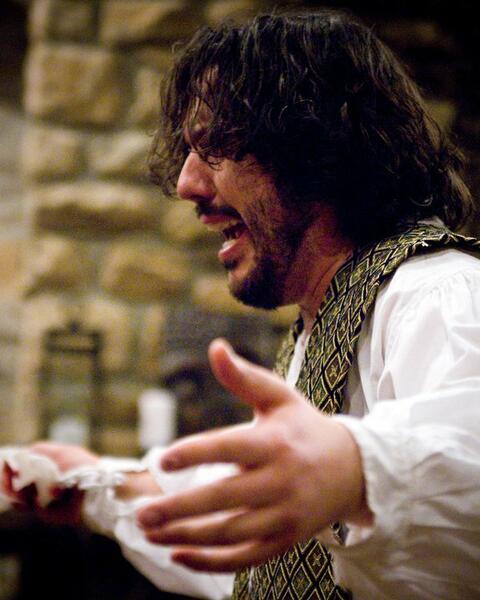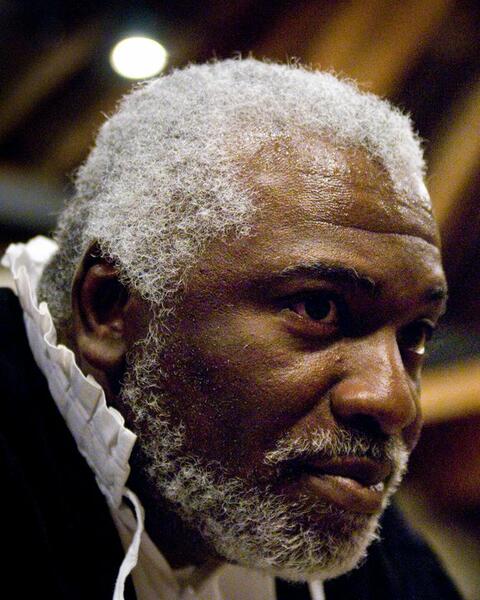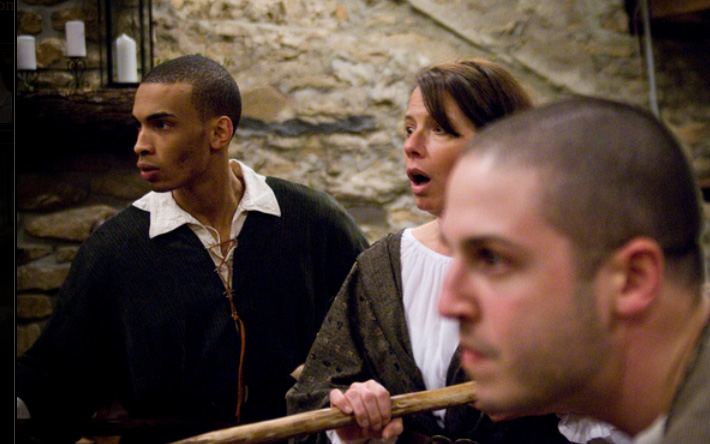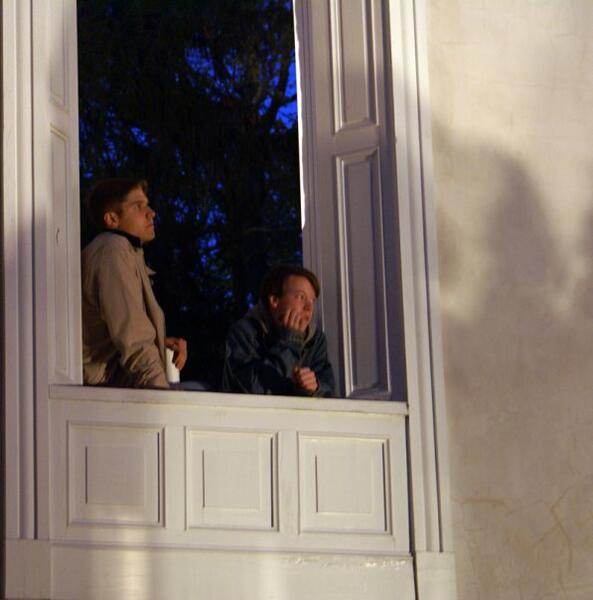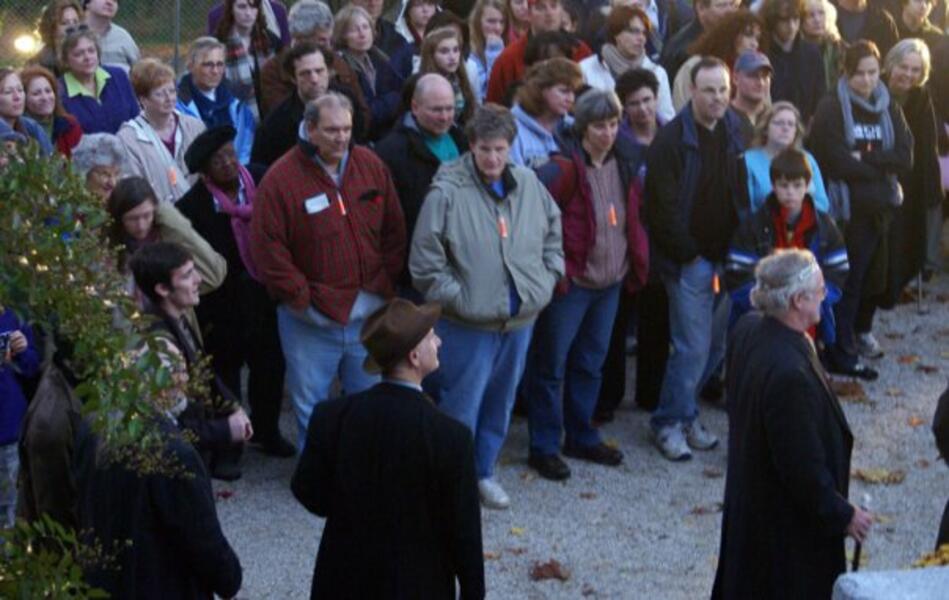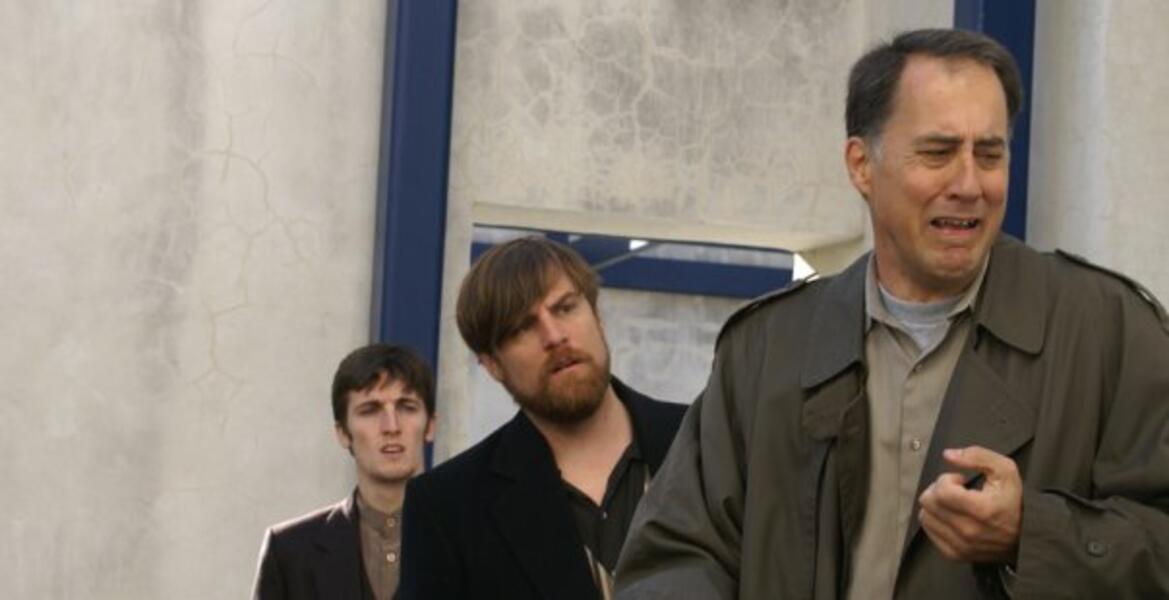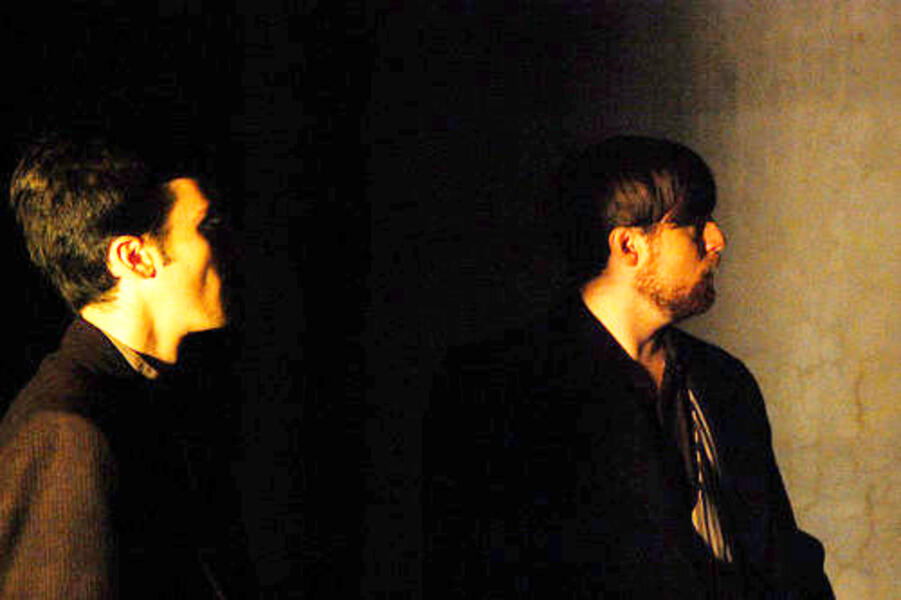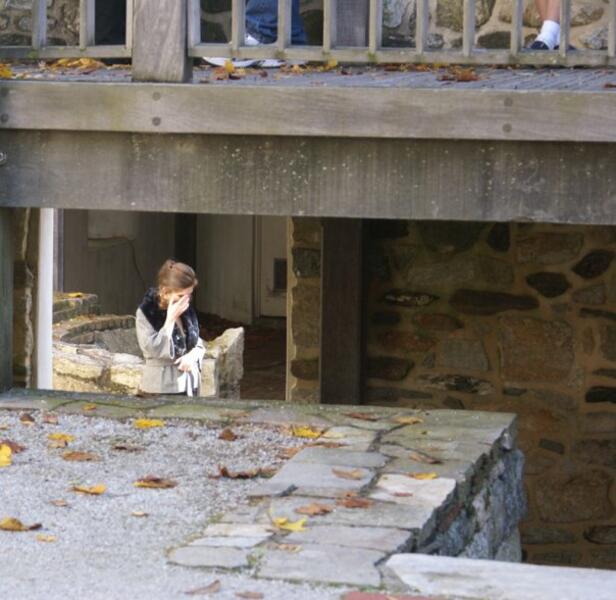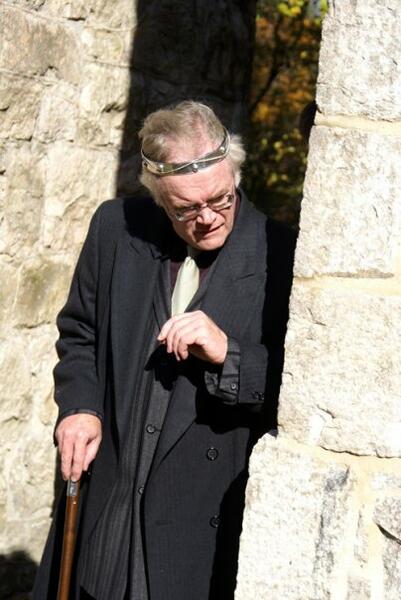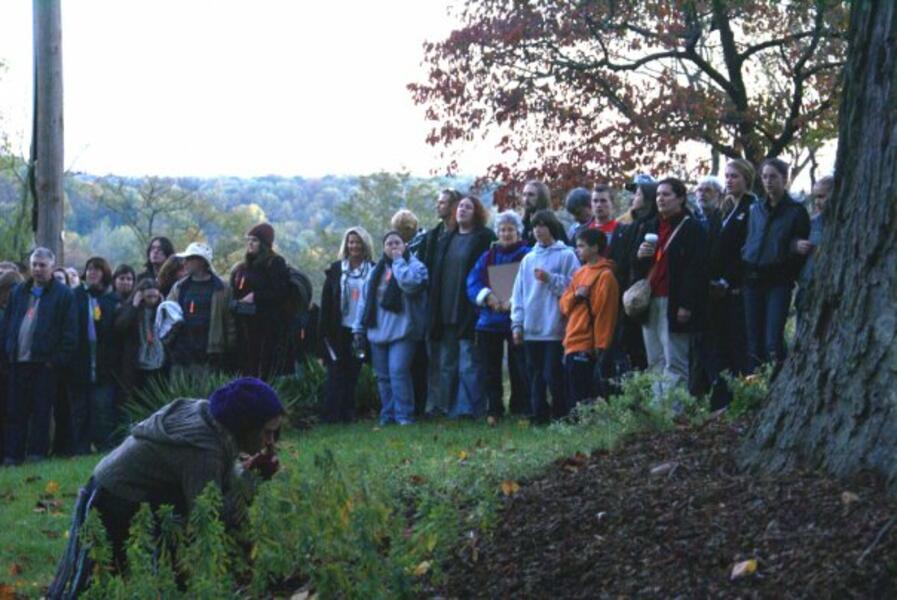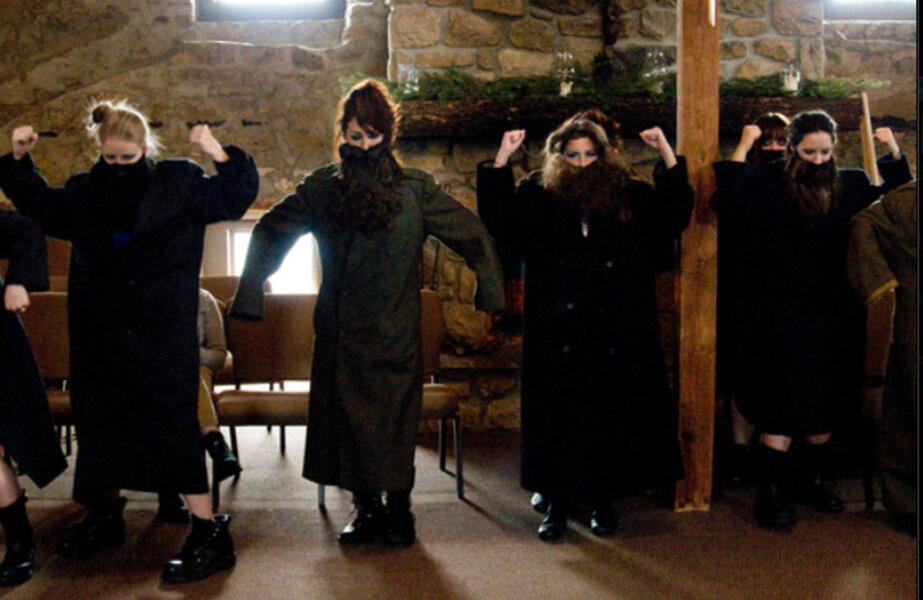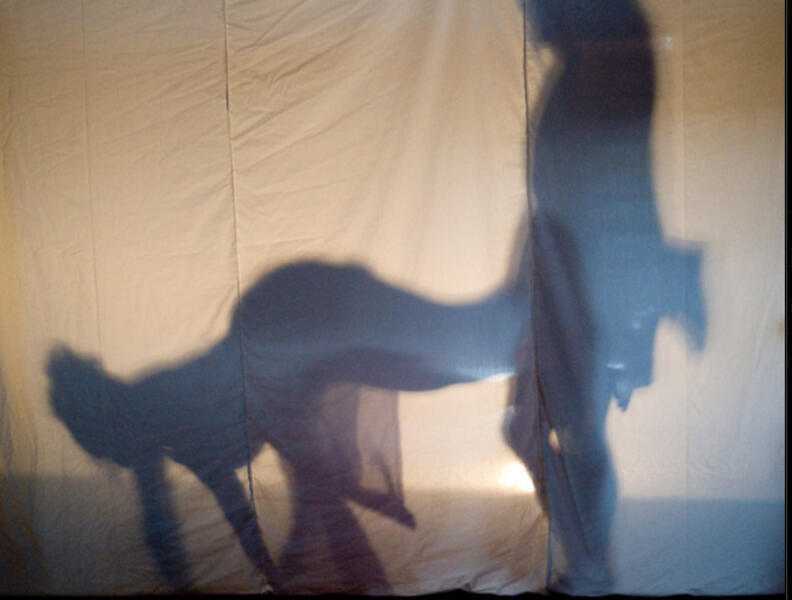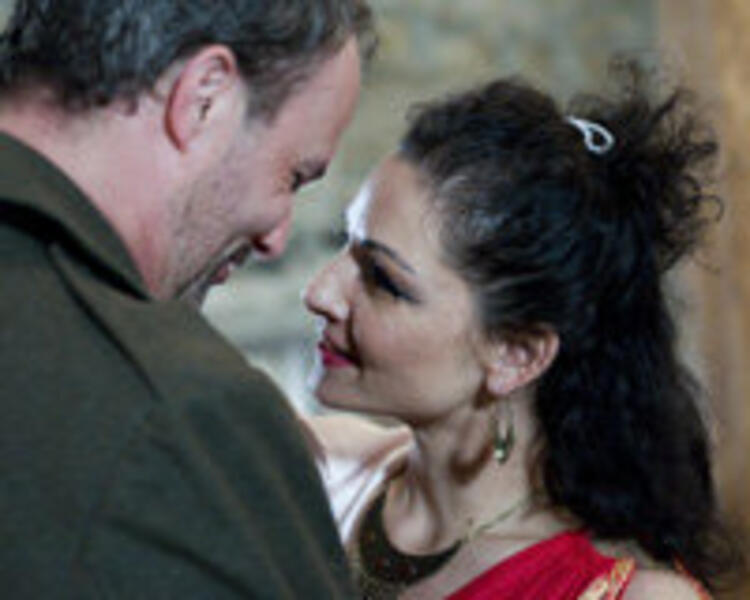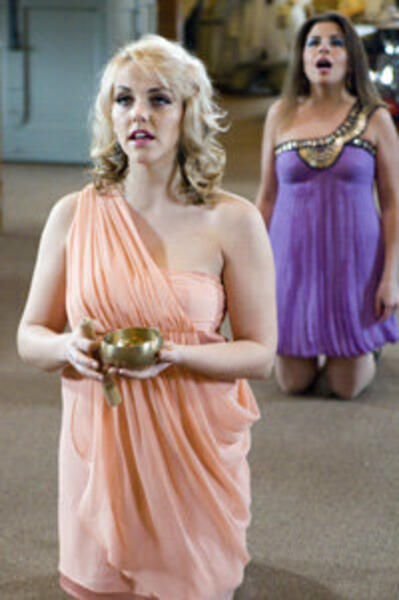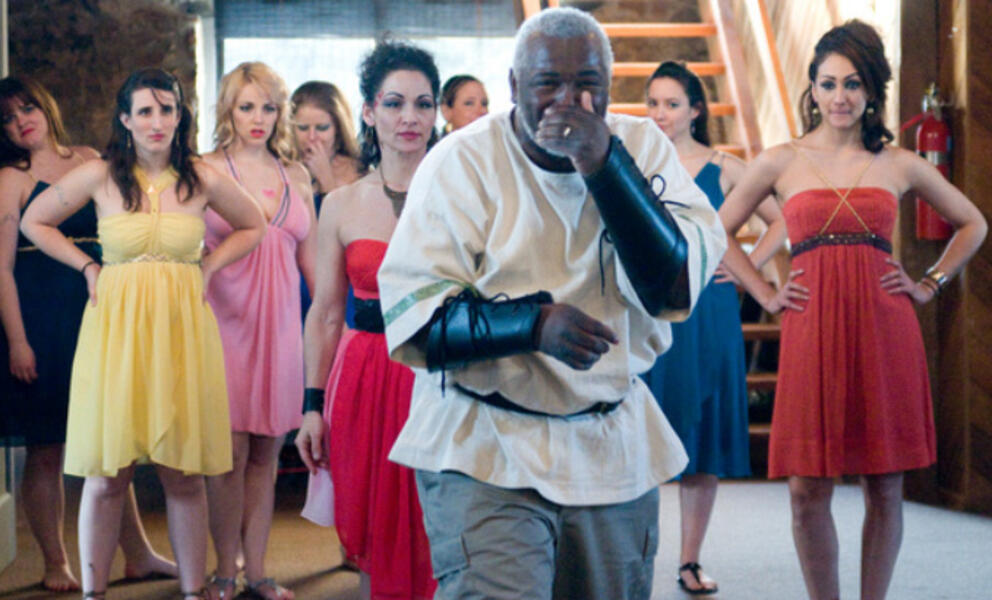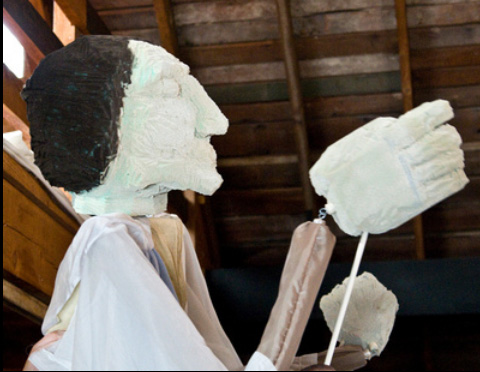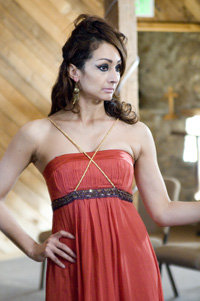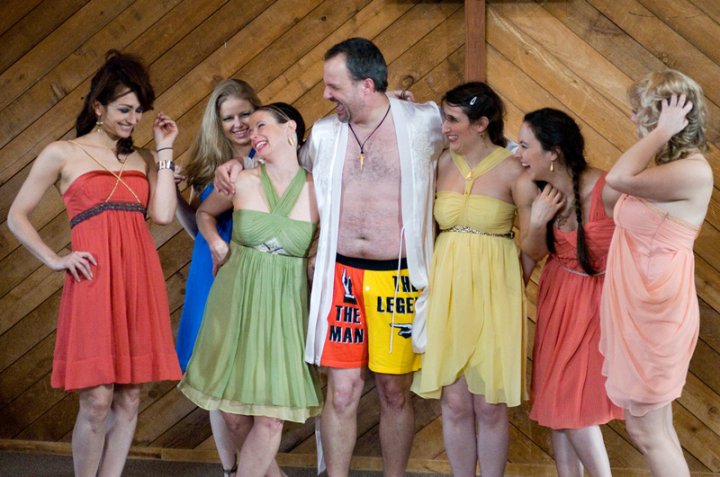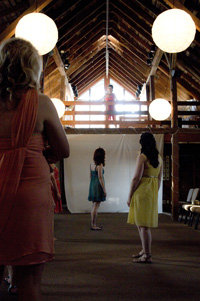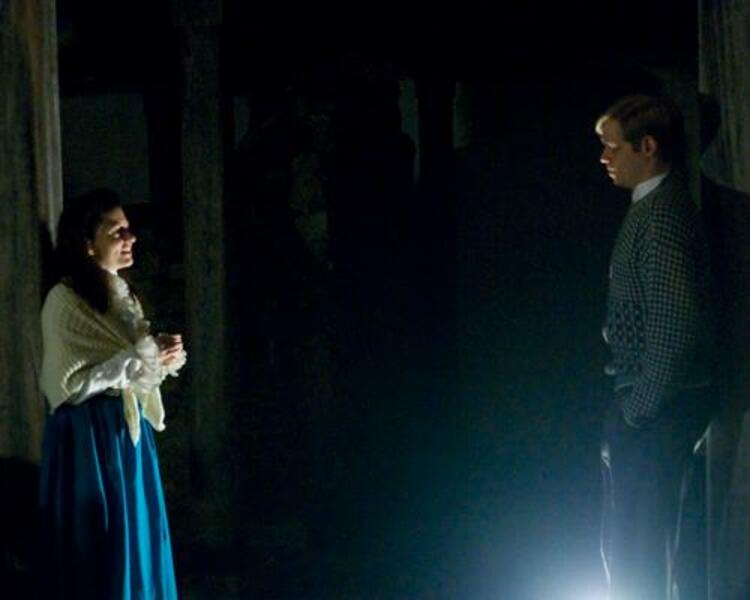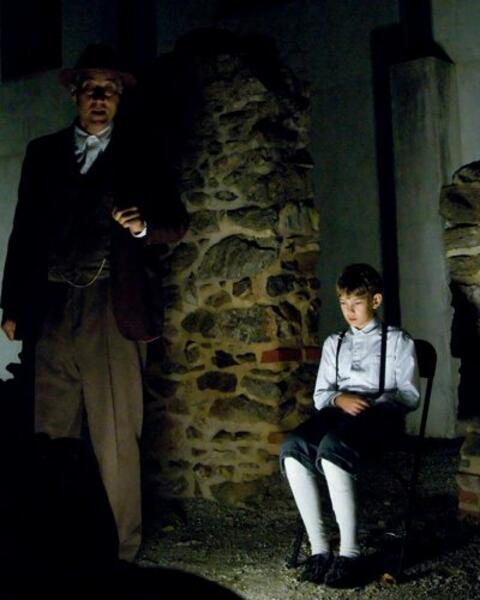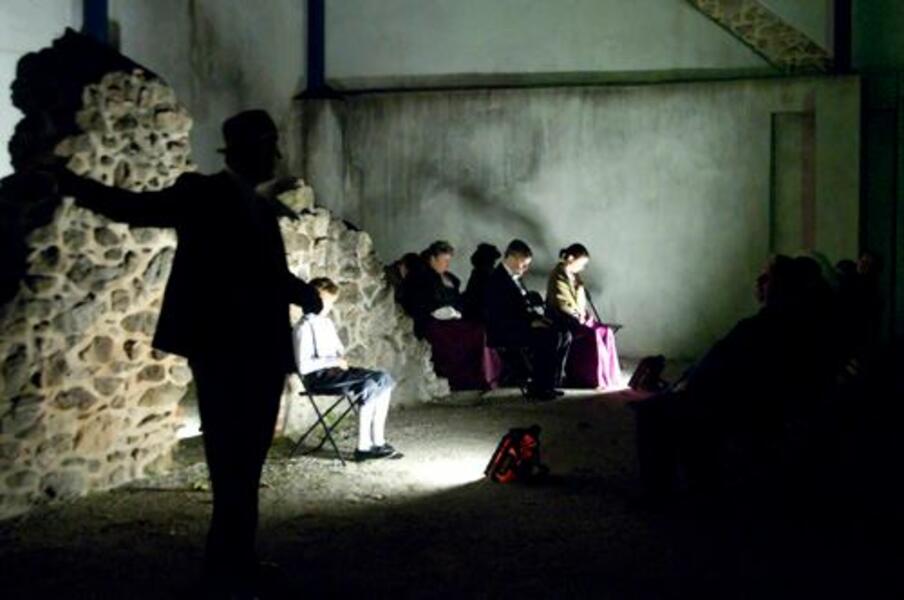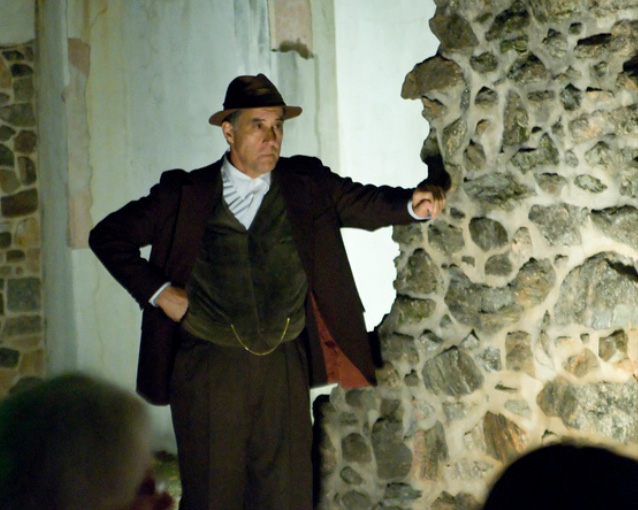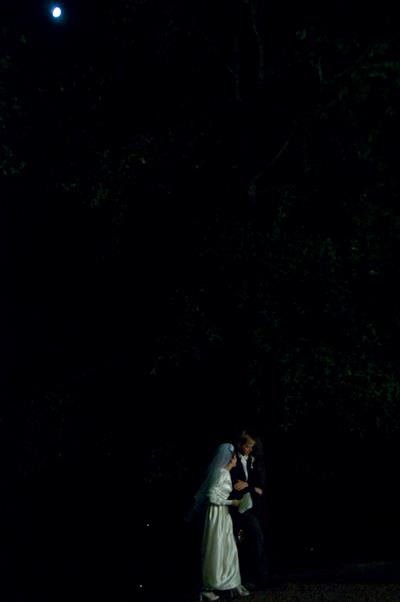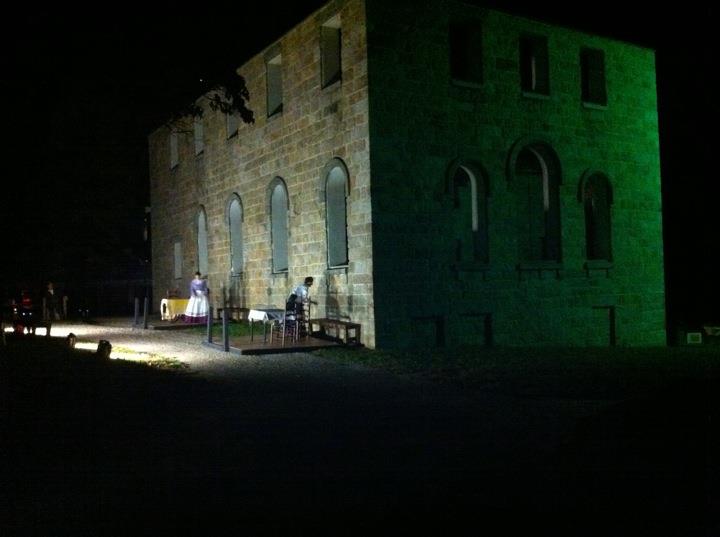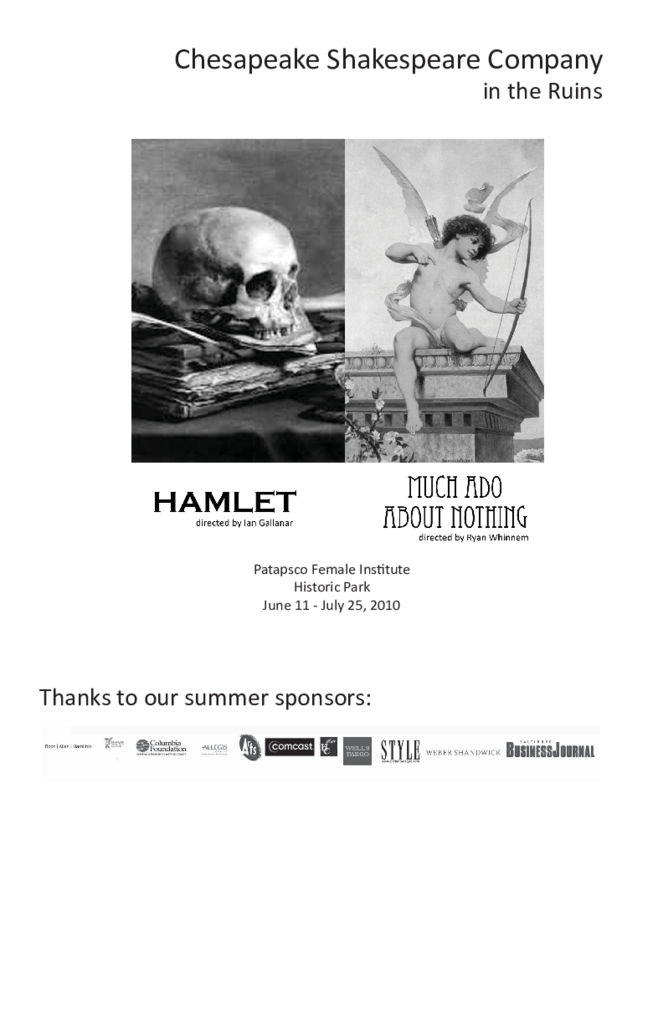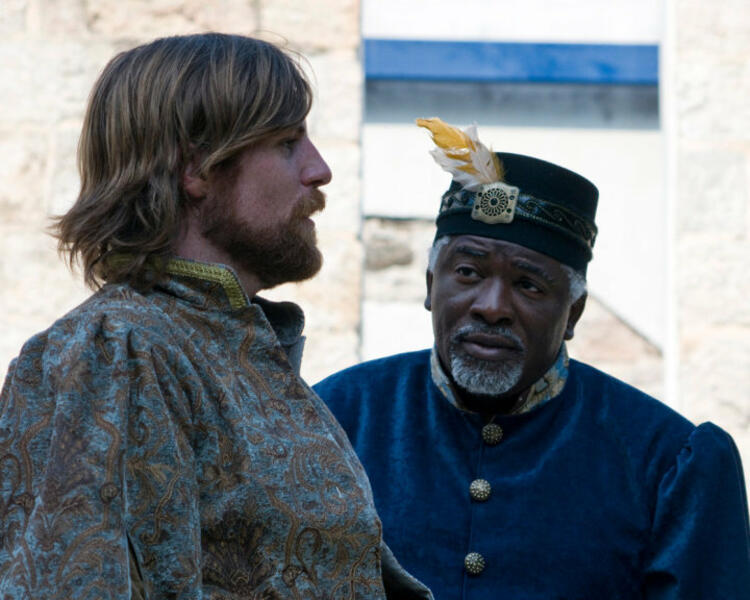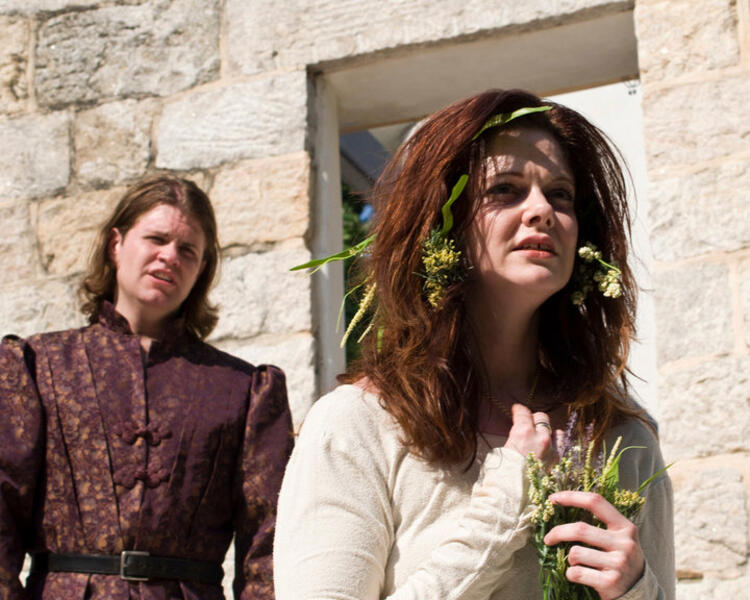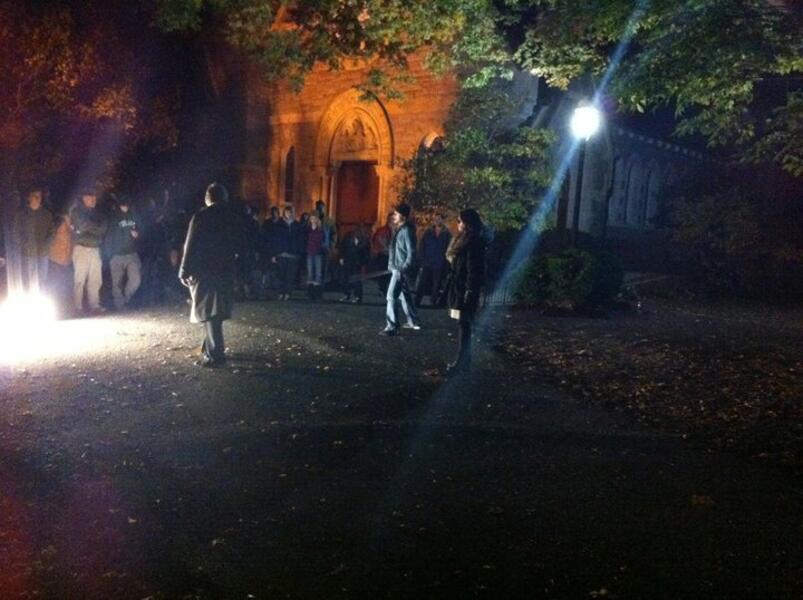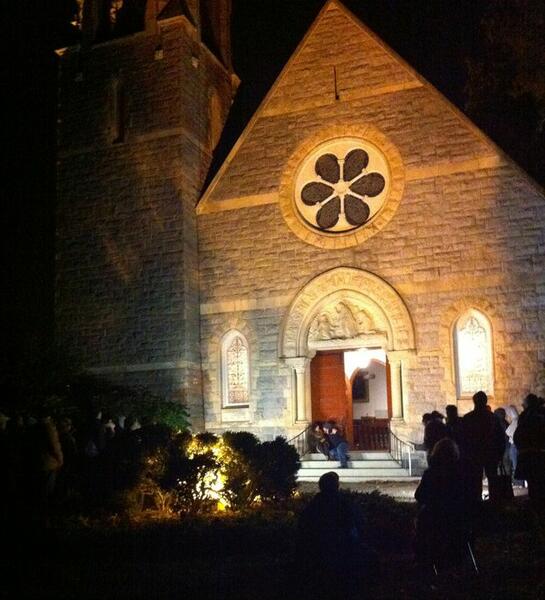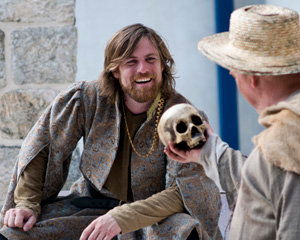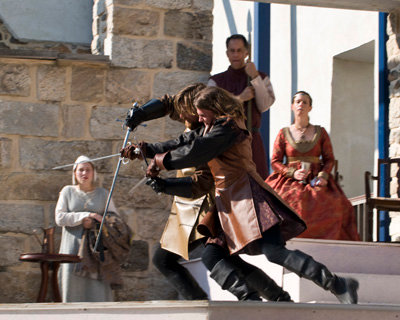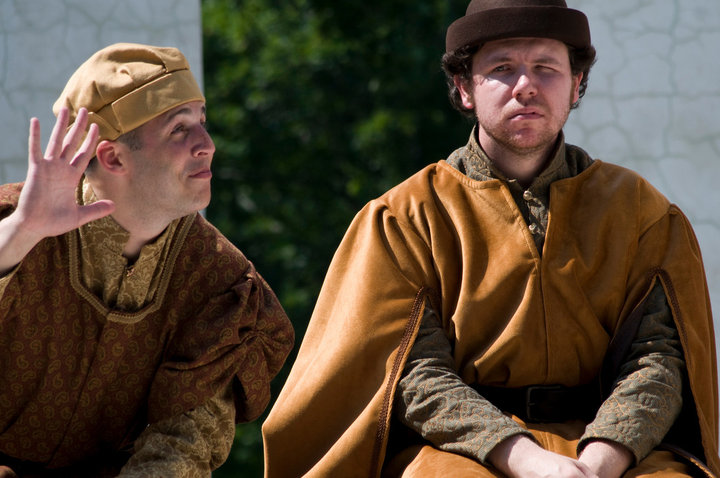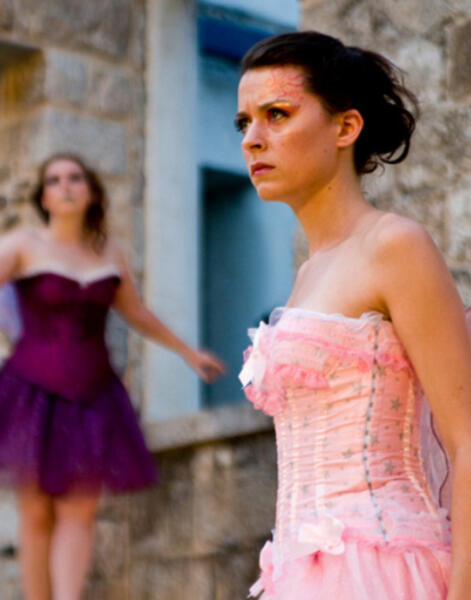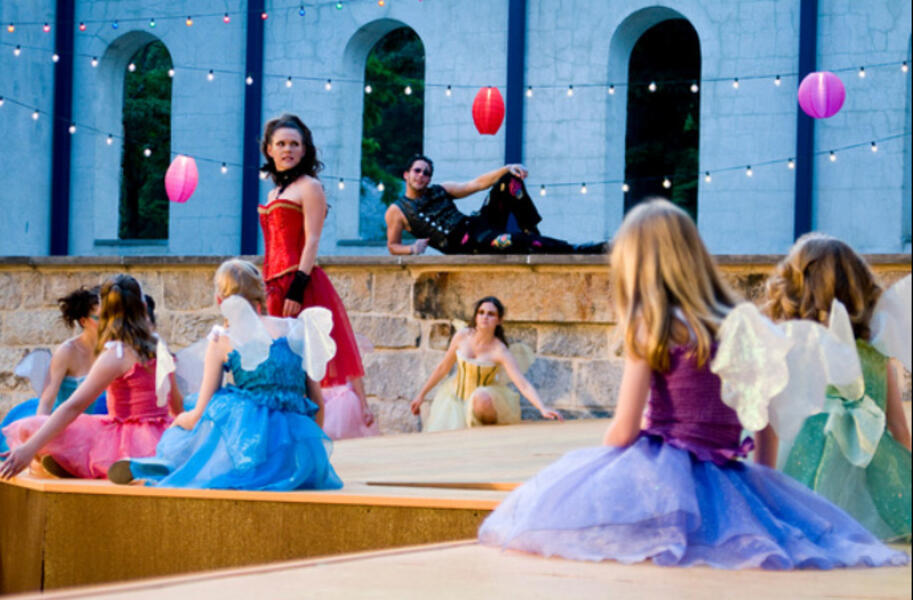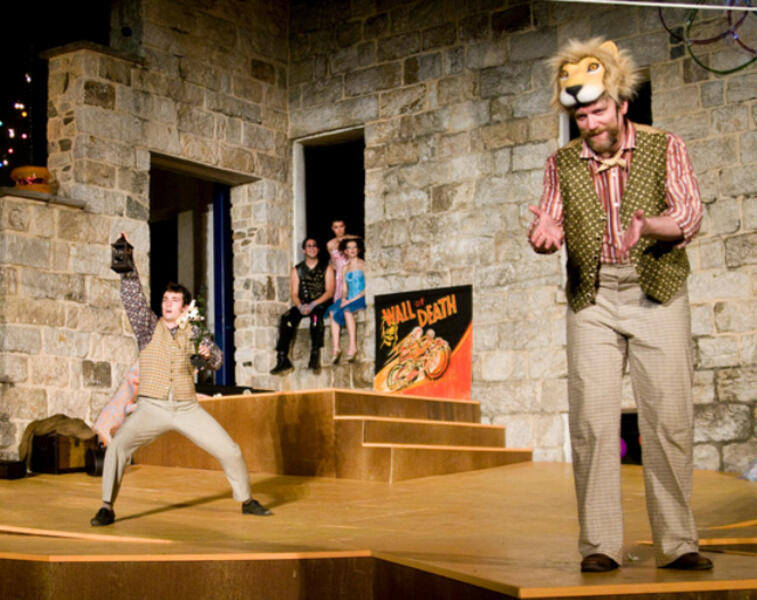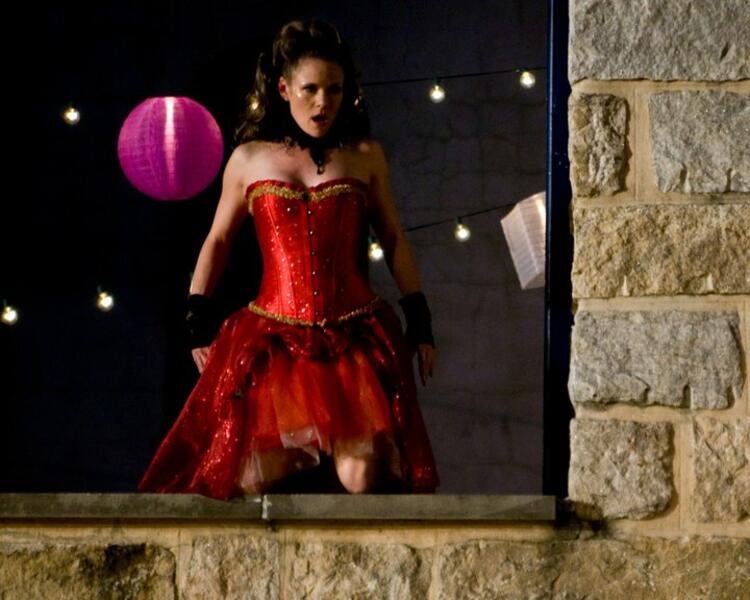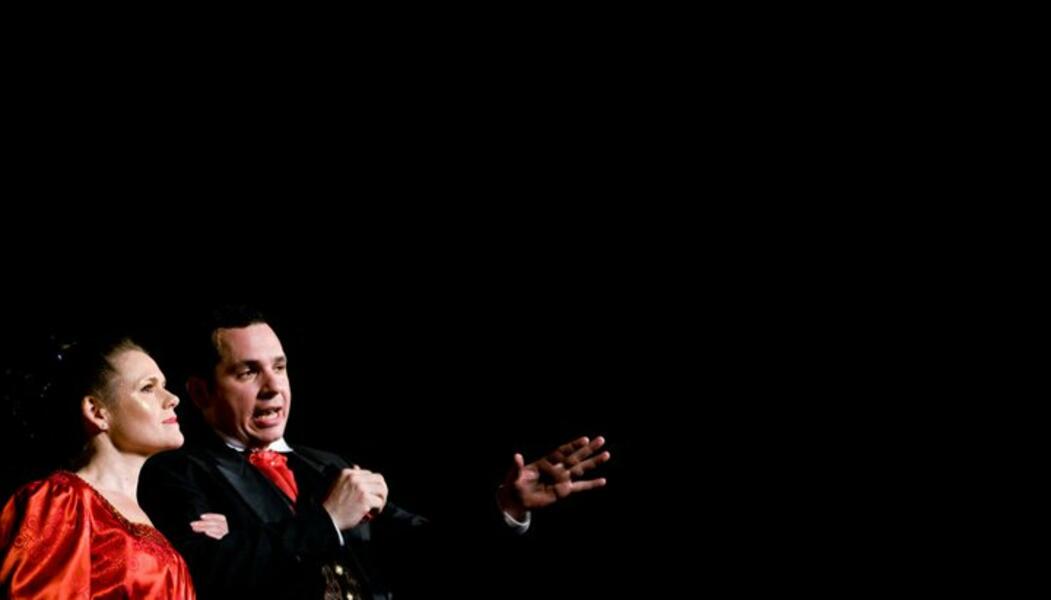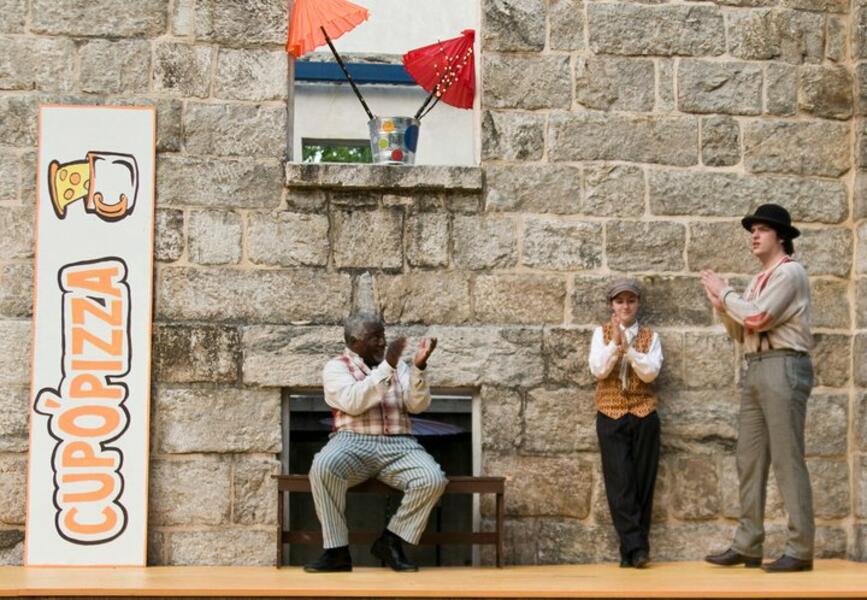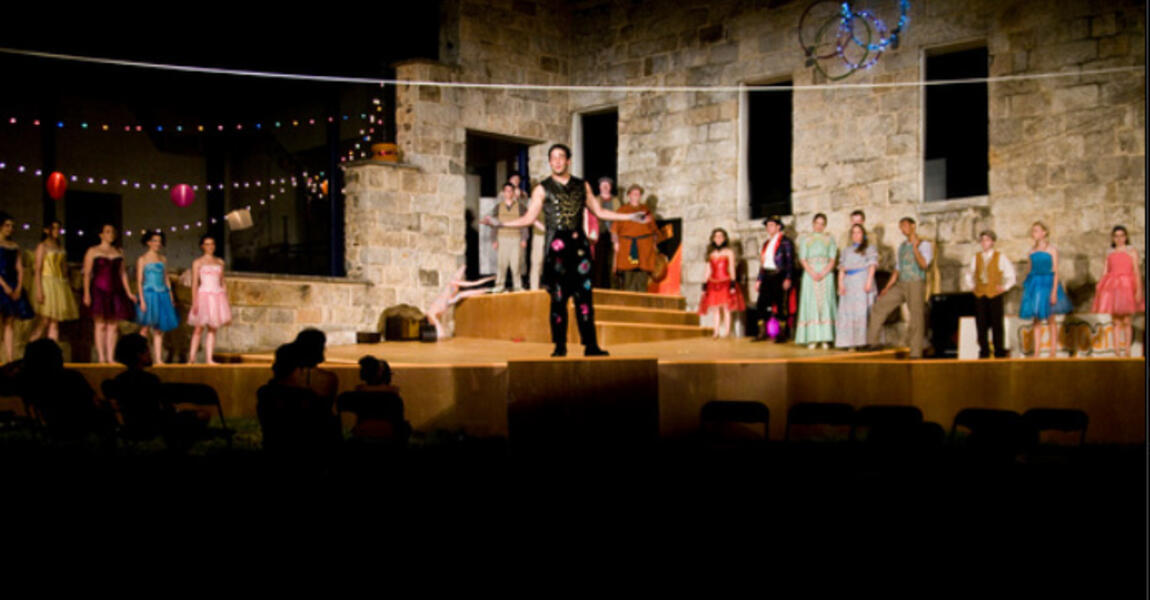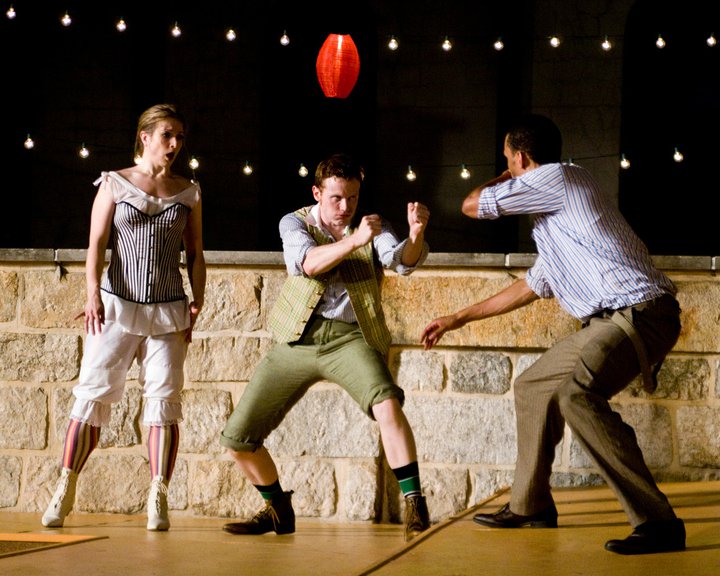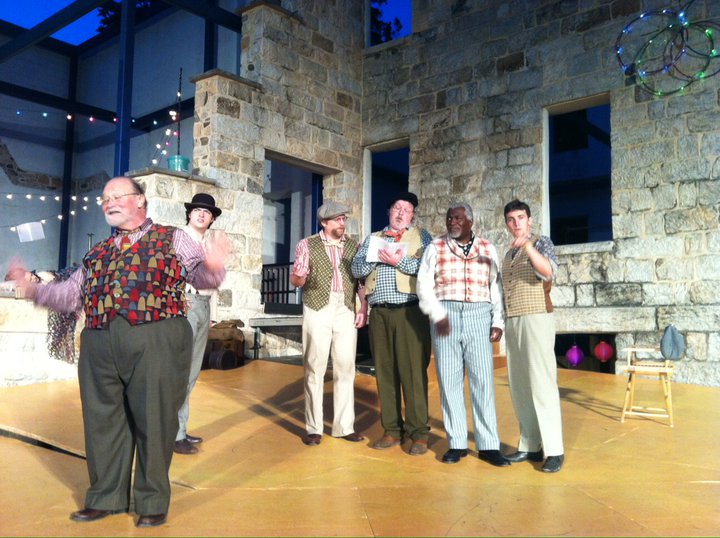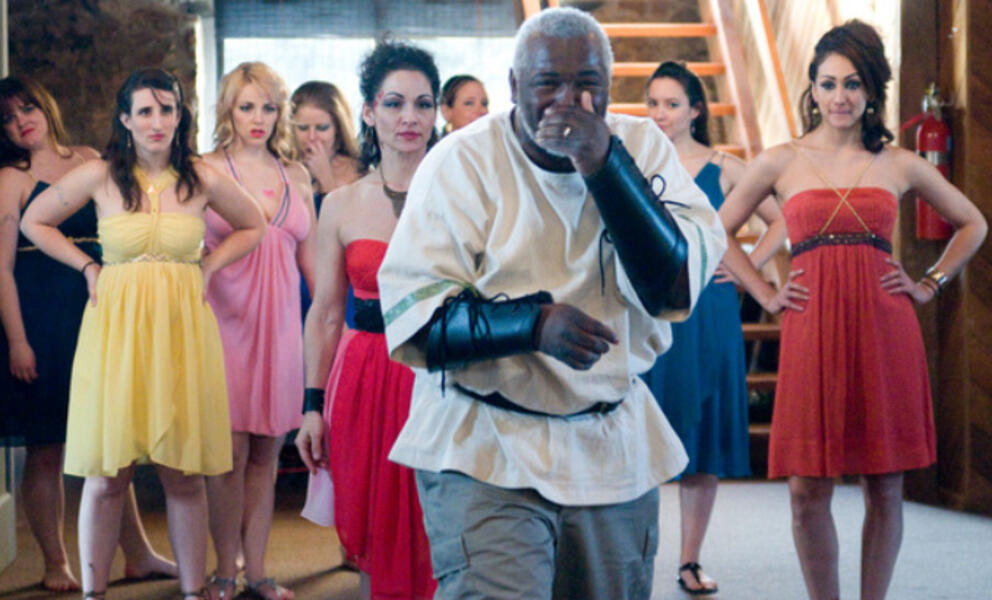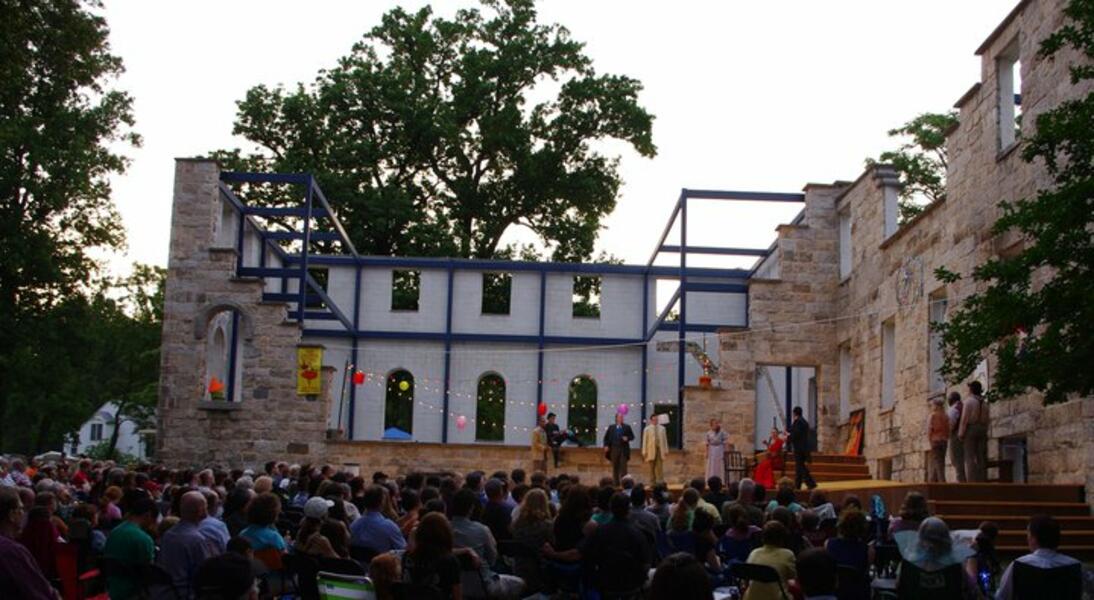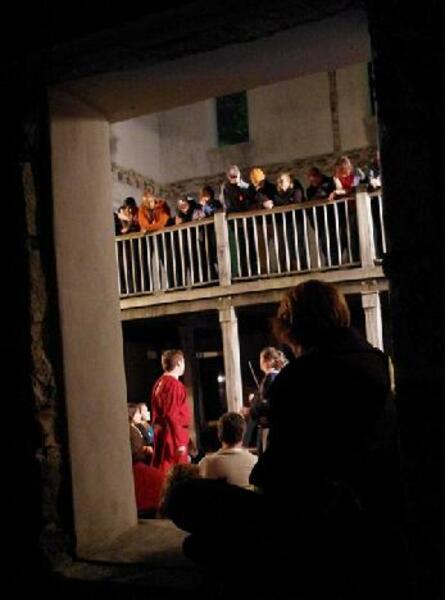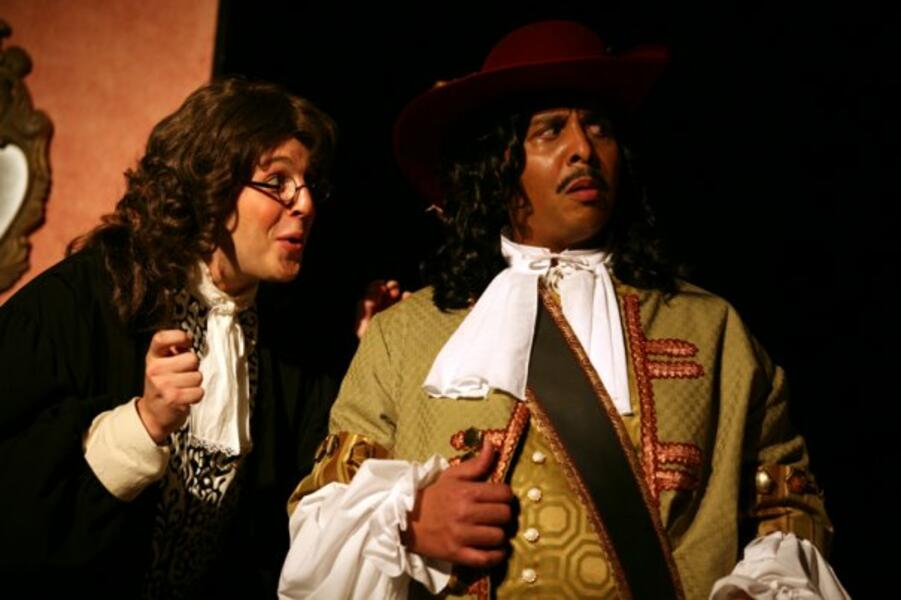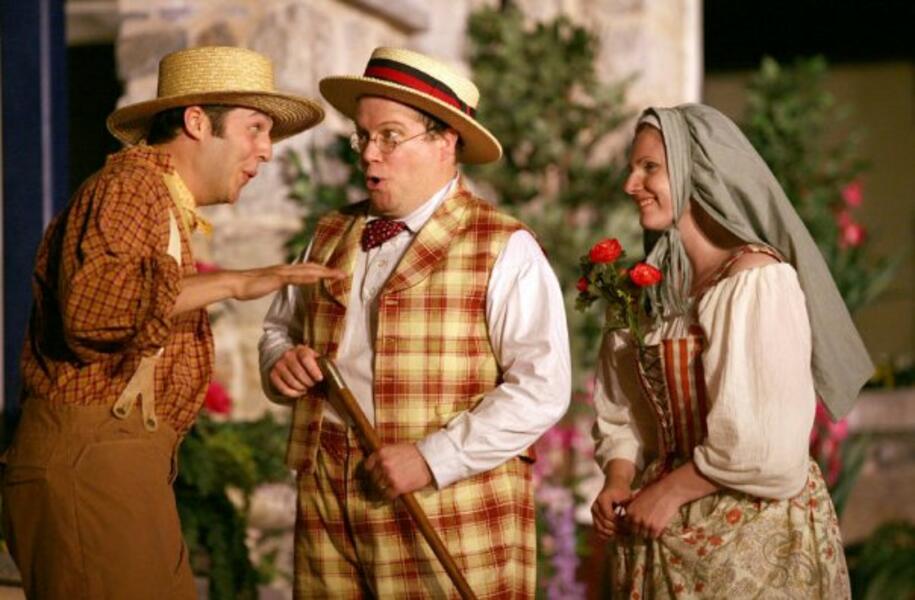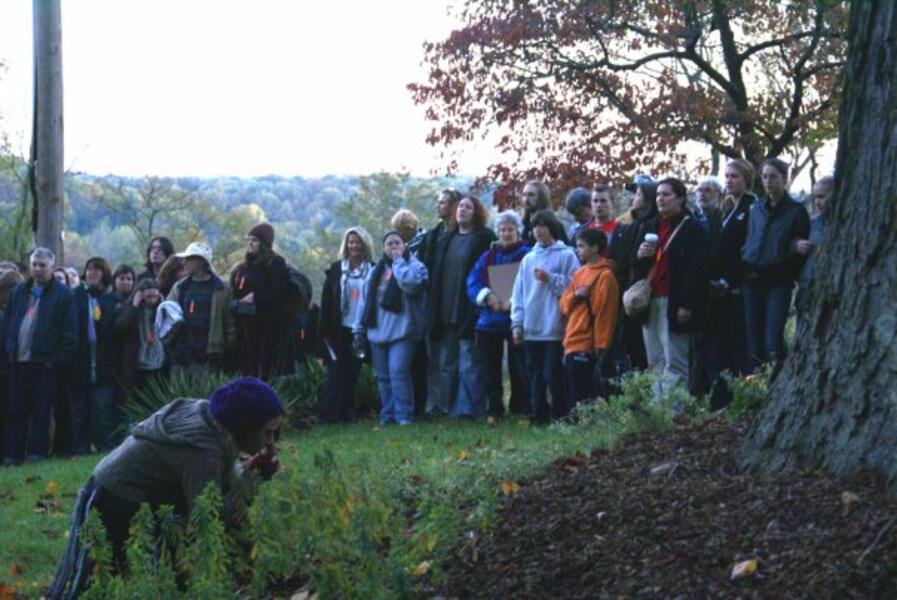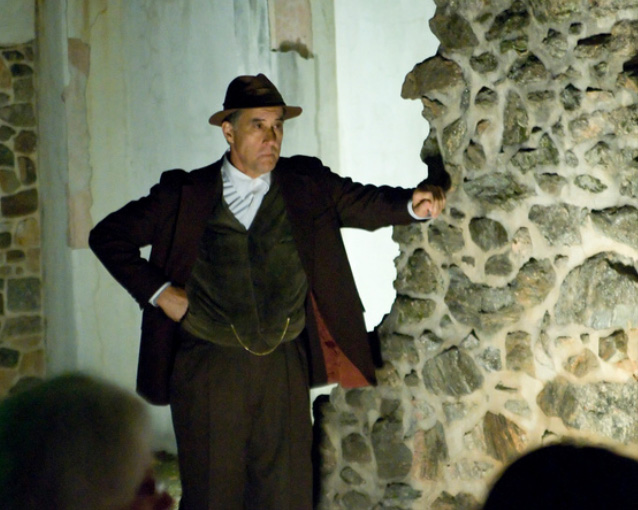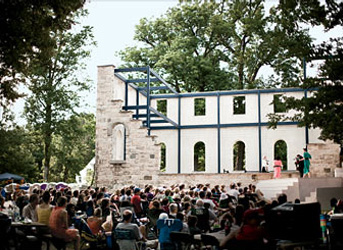About Ian
I am a professional Artistic Director with thirty years of experience in professional theater. I specialize in creating theatrical experiences in non-traditional performance settings and reaching under-served communities. My work, which strays from the mainstream, reaches audiences who have generally abandoned any connection to theater or the performing arts by creating new performance dynamics with some of the oldest plays in the canon.
My early career was as a professional actor… more
My early career was as a professional actor… more
Jump to a project:
Cymbeline
Cymbeline is Shakespeare?s play about redemption and forgiveness. The 2011 CSC production was a site specific performance done in a local church setting. In addition, each actor learned and rehearsed two different roles and was ready and able to perform either each and every night. Ten minutes prior to curtain, a member of the audience flipped a coin a number of times to decide which actor would play which role. This technique was utilized in an attempt to combine two very distinct creative skills- that of improvisation as well as understanding and mastering classical texts.
In a play in which the nature of humanity is in the forefront, the production style attempted to be intimate and emotionally truthful. The production also made very minimal use of technical design and support. Rather, it relied on the actors, their relationships and the actual physical space in which it was performed.
In a play in which the nature of humanity is in the forefront, the production style attempted to be intimate and emotionally truthful. The production also made very minimal use of technical design and support. Rather, it relied on the actors, their relationships and the actual physical space in which it was performed.
Macbeth in the Haunted Ruins
This production of Macbeth was really a bunch of different productions of Macbeth. In 2007, this show was premiered as a residency performance at the Episcopal High School in Alexandria, Virginia (interestingly Senator John McCainâ??s alma mater). This production used several high school students in some of the minor roles working with the Chesapeake Shakespeare Companyâ??s professional acting company. Next, it was off to the McDonogh School, where a two week residency ended with a performance with McDonogh students in those same supporting roles. Then, the very next day, this Macbeth was performed for a group of 250 inmates and their families at the Patapsco Institute, the first live performance of Shakespeare in a Maryland maximum security prison.
All of this was followed by a month -long run at the Howard County Center for the Arts - selling out many performances and shattering attendance records for the indoor theater.
Then, we brought the production back. Why? Two reasons-- firstly, we received such a great reaction to the production, receiving national press coverage and awards; and we wanted to make the production available to people who hadnâ??t had the chance to see it the first time around. Also, we wanted to reshape this production for two new venues.
Weâ??re thrilled to be presenting our Macbeth in November for students from around the region at Goucher Collegeâ??s Kraushaar Auditorium. We believe in the power of live performances of Shakespeare and feel fortunate to be able to share this experience with so many students.
We presented this play in October 2008 as an adventure for the audience-- outdoors among the haunted ruins at the Patapsco Female Institute Historic Park. We wanted to present Shakespeare in a way thatâ??s unique for audiences -- by having them follow the action of the play at various locations around the site. It is important to CSC to find new ways for people to connect to Shakespeare. We think these two Macbeth experiences are terrific ways to do just that.
All of this was followed by a month -long run at the Howard County Center for the Arts - selling out many performances and shattering attendance records for the indoor theater.
Then, we brought the production back. Why? Two reasons-- firstly, we received such a great reaction to the production, receiving national press coverage and awards; and we wanted to make the production available to people who hadnâ??t had the chance to see it the first time around. Also, we wanted to reshape this production for two new venues.
Weâ??re thrilled to be presenting our Macbeth in November for students from around the region at Goucher Collegeâ??s Kraushaar Auditorium. We believe in the power of live performances of Shakespeare and feel fortunate to be able to share this experience with so many students.
We presented this play in October 2008 as an adventure for the audience-- outdoors among the haunted ruins at the Patapsco Female Institute Historic Park. We wanted to present Shakespeare in a way thatâ??s unique for audiences -- by having them follow the action of the play at various locations around the site. It is important to CSC to find new ways for people to connect to Shakespeare. We think these two Macbeth experiences are terrific ways to do just that.
Lysistrata
Greek comedies are an interesting proposition. When you work with a classical theater company, people often bring up the idea of producing Greek comedies. After all, the Greeks invented comedy- at least in a formal sense. The trick with Greek comedy is that it was created as a sort of ritual fertility magic. That a relationship we don't often think of in our contemporary environment. So, it doesn't come natural.
It seemed to me that, of all the plays, Lysistrata probably had the best chance of accomplishing this. But why do yet another production of Lysistrata? What could we shine new light onto? While looking for translations or adaptations of the play, I found another interesting play by Aristophanes. It was called the Assembly Women and it read almost like a first draft of Lysistrata. It's hardly, if ever done, because the whole second half of the play is a rambling satirical bit about sexual practices that is barely decipherable.
I decided to combine both plays into an original adaptation and because music was clearly such an important component of the original Greek comedy, I wrote a new musical. We produced it in a church space as I thought it appropriate for the ritual magic aspects of the experience.
The attempt of the new adaptation and the production was to contemporize certain style aspects of the play while keeping true to the intention of the script. The costumes, designed by Kristina Lambdin combined contemporary and classical elements. The casting was done to show a wide diversity of beauty. The music was, for the most part, raunchy and was, at times contemporary and primitive. The production was celebratory. Greek phalluses required by the script were portrayed by colorful balloons.
It seemed to me that, of all the plays, Lysistrata probably had the best chance of accomplishing this. But why do yet another production of Lysistrata? What could we shine new light onto? While looking for translations or adaptations of the play, I found another interesting play by Aristophanes. It was called the Assembly Women and it read almost like a first draft of Lysistrata. It's hardly, if ever done, because the whole second half of the play is a rambling satirical bit about sexual practices that is barely decipherable.
I decided to combine both plays into an original adaptation and because music was clearly such an important component of the original Greek comedy, I wrote a new musical. We produced it in a church space as I thought it appropriate for the ritual magic aspects of the experience.
The attempt of the new adaptation and the production was to contemporize certain style aspects of the play while keeping true to the intention of the script. The costumes, designed by Kristina Lambdin combined contemporary and classical elements. The casting was done to show a wide diversity of beauty. The music was, for the most part, raunchy and was, at times contemporary and primitive. The production was celebratory. Greek phalluses required by the script were portrayed by colorful balloons.
Hamlet
I directed the Summer and Fall of 2010 CSC production of Hamlet. The point was, and always is, to give modern audiences access to this great play. The performance style in this production attempted to break down barriers between audiences and classic theater in part by breaking many of the rules of theater culture. I don't believe in separating artists from audience. I believe that the idea of direct address (Shakespearean characters addressing the audience directly) can translate into other parts of the performance. Not only can characters address the audience directly, but also actors and directors and theater companies. Modern visual art understands that the dynamic between medium and participant is no longer simply a "magic trick" - of having the viewer be fooled into thinking the painting is life- but rather, something else- a presentation of an idea. That's what my productions of classic plays attempt to do- to acknowledge the medium boldly and overtly but in a way that doesn't alienate the audience.
My production of Hamlet was high-energy with an attempt to engage the audience on multiple levels. It is my feeling that Shakespeare is for everyone and it is my job, as director, to eliminate any of the barriers between audience and play.
My production of Hamlet was high-energy with an attempt to engage the audience on multiple levels. It is my feeling that Shakespeare is for everyone and it is my job, as director, to eliminate any of the barriers between audience and play.
A Midsummer Night's Dream
My work in the theater is designed for people who think they have been abandoned by theater. It takes classical texts and reimagines a theatrical style that is simultaneously modern and without time stamp. It attempts to create bonds between audience and artistic experience that meets the audience on their terms.
I am not interested in illustrating the ?greatness? of plays to audiences, nor am I interested in having an audience admire the cleverness or skillfulness in a production, rather I am interested in creating a conversation, using the medium of classical theater, between art, artist and audience.
I am unconvinced that the standard theater going experience does this. That?s why my work attempts to break away from conventions while embracing the elements of live performance that is meaningful to people. That?s why so much of my work is site specific or performed in non-traditional theater environments. That?s why this production of A Midsummer Night?s Dream uses audio and visual imagery that is recognizable to audiences. That?s why, in an attempt to de-mystify the artistic process, actors and audiences share the performance space together before, during and after the play.
At the same time, I find the texts of works like A Midsummer Night?s Dream to be worthy of the description ?classical.? That is, the text is meaningful in ways that cut to the meaning of our shared humanity. Contemporary theater has, so often times, become so splintered in its subject, theme and potential audience that it serves an ever decreasing amount of people.
Bring out the beauty of the words, the lightness of the comedy, the delight of the music and create a festive event that hardly feels like theater, that?s what I have in mind. That?s what I think was accomplished in this production of A Midsummer Night?s Dream- a production that was enjoyed by thousands of area neighbors who have long since given up on theater.
I am not interested in illustrating the ?greatness? of plays to audiences, nor am I interested in having an audience admire the cleverness or skillfulness in a production, rather I am interested in creating a conversation, using the medium of classical theater, between art, artist and audience.
I am unconvinced that the standard theater going experience does this. That?s why my work attempts to break away from conventions while embracing the elements of live performance that is meaningful to people. That?s why so much of my work is site specific or performed in non-traditional theater environments. That?s why this production of A Midsummer Night?s Dream uses audio and visual imagery that is recognizable to audiences. That?s why, in an attempt to de-mystify the artistic process, actors and audiences share the performance space together before, during and after the play.
At the same time, I find the texts of works like A Midsummer Night?s Dream to be worthy of the description ?classical.? That is, the text is meaningful in ways that cut to the meaning of our shared humanity. Contemporary theater has, so often times, become so splintered in its subject, theme and potential audience that it serves an ever decreasing amount of people.
Bring out the beauty of the words, the lightness of the comedy, the delight of the music and create a festive event that hardly feels like theater, that?s what I have in mind. That?s what I think was accomplished in this production of A Midsummer Night?s Dream- a production that was enjoyed by thousands of area neighbors who have long since given up on theater.
Chesapeake Shakespeare Company
I am proud to say that I am the Founding Artistic Director of one of the fastest growing cultural institutions in Maryland. As Artistic Director of the Chesapeake Shakespeare Company, I am responsible for creating an artistic mission and vision for the company and continue to manage our adherence to those principals. I proudly managed this company during its rapid growth over the past eight years. This is the story of the Chesapeake Shakespeare Company:
Last year, the Chesapeake Shakespeare Company served over 10,000 audience members and students. In the current difficult economic environment , CSC is actually showing record growth each and every year. Here is the story of the Chesapeake Shakespeare Company:
What makes Shakespeare so great? The Chesapeake Shakespeare Company poses that question each time it stages one of its ambitious, intimate and enjoyable productions, each time it reaches out with educational programming to both Shakespeare fans and apprehensive newcomers, each time it tries something new with classic theatre. The result is an unbounded, exhilarating discussion between our audiences and our artists.
Chesapeake Shakespeare Company was born in 2002 when a half a dozen or so artists came together with a vague idea of wanting to produce "Shakespeare that's not stuffy.â? Their debut showcase performance was viewed by fewer than a hundred local supporters but they instantly gave enthusiastic support to this fledgling idea. Empowered by a talented group of artists, a skillful, experienced management team and a community that was rapidly engaged, the Chesapeake Shakespeare Company quickly grew into a regional voice for new approaches to classic theater.
Chesapeake Shakespeare Company's journey has led to its becoming the largest non-union professional Shakespeare company in America. That tiny group of artists has grown into a company of fifty artists from all across Maryland that have become a valued cultural resource to the region. In 2007, Chesapeake Shakespeare Company was selected to represent Maryland in the â??Shakespeare in Washingtonâ? festival and its productions have won multiple theatre awards. Its staff is featured among the leadership of the international Shakespeare Theatre Association. Its education program reaches all parts of the community-- free admission for 1,000 children each summer season, wide-ranging in-school workshops, pre-show talks, and informal gatherings for adults.
Our loyal audiences return year after year, show after show, energized by their engagement in the discussion of how Shakespeare and other classics can be a meaningful, affirming part of the cultural life of our community and its members. Through its performances and educational and outreach programming, the Company has become a valuable resource to Howard County residents and beyond, with 50% of the total participants in our programming coming from all parts of Maryland, the District of Columbia, Virginia, Delaware and Pennsylvania.
Chesapeake Shakespeare Company achieves this relationship with our community because our work purposefully and actively reaches a wide variety of people with different experiences with classic theater--from those who have a lifelong love of Shakespeare to (and especially) those who are tentatively experiencing classic theatre for the first time.
The Chesapeake Shakespeare Company is firmly committed to the following values in its approach to theater:
â?¢ Shakespeare and the classics performed in an intimate, personal way can allow the audience to connect to these great works in a more profound way.
â?¢ We can make almost anyone love Shakespeare
â?¢ There is no separation between satisfying an audience and quality work.
â?¢ We are here to enrich, educate, entertain and engage the community--our neighbors in the region, their families and their friends.
â?¢ Our company should continually grow and improve as artists and thinkers, facilitating our evolution into an even more powerful artistic force. With well-trained, enthusiastic, and adventurous artists, we attract even more people into our conversation about what makes Shakespeare and classic theatre important.
â?¢ It is good to challenge the conventional wisdom -- in performance traditions, in ways theaters communicate to their neighbors, and in identifying who our audience is.
MISSION
The Chesapeake Shakespeare Company creates performances and education programs out of great classic theatre. Classic plays can be awfully good, but only if they speak to their audience and the community in a way that is dynamic, personal, and pleasurable. We do plays that people like and we perform them in innovative and intimate ways that intensify the connection between audiences and artists. We do this because we want to know what makes Shakespeare so great -- and we ask our audience and our community to explore that question alongside us.
VISION
The Chesapeake Shakespeare Company is committed to finding approaches to the performance of Shakespeare and other classic theatre that show people why these plays have lived for centuries. We will do this by seeking new ways to connect with our audience, our artists and our community, by deepening our experimentation with performance style, and by exploring all kinds of places to perform, places that are familiar and places that are unexpected.
We will do this as a dynamic, energetic, and accessible center of education and culture for the mid-Atlantic region, one that invites an ever- growing regional community, comprised of people from every part of society, to ask us and each other the question, "what makes Shakespeare so great?"
These works, our approach, and the conversations we foster, all contribute to the well-being of our community by allowing us to engage each other in an exploration of humanity. That invaluable process results in civility, compassion, and emotional growth for us as individuals and as a collective. On top of all that, everyone has a lot of fun.
Last year, the Chesapeake Shakespeare Company served over 10,000 audience members and students. In the current difficult economic environment , CSC is actually showing record growth each and every year. Here is the story of the Chesapeake Shakespeare Company:
What makes Shakespeare so great? The Chesapeake Shakespeare Company poses that question each time it stages one of its ambitious, intimate and enjoyable productions, each time it reaches out with educational programming to both Shakespeare fans and apprehensive newcomers, each time it tries something new with classic theatre. The result is an unbounded, exhilarating discussion between our audiences and our artists.
Chesapeake Shakespeare Company was born in 2002 when a half a dozen or so artists came together with a vague idea of wanting to produce "Shakespeare that's not stuffy.â? Their debut showcase performance was viewed by fewer than a hundred local supporters but they instantly gave enthusiastic support to this fledgling idea. Empowered by a talented group of artists, a skillful, experienced management team and a community that was rapidly engaged, the Chesapeake Shakespeare Company quickly grew into a regional voice for new approaches to classic theater.
Chesapeake Shakespeare Company's journey has led to its becoming the largest non-union professional Shakespeare company in America. That tiny group of artists has grown into a company of fifty artists from all across Maryland that have become a valued cultural resource to the region. In 2007, Chesapeake Shakespeare Company was selected to represent Maryland in the â??Shakespeare in Washingtonâ? festival and its productions have won multiple theatre awards. Its staff is featured among the leadership of the international Shakespeare Theatre Association. Its education program reaches all parts of the community-- free admission for 1,000 children each summer season, wide-ranging in-school workshops, pre-show talks, and informal gatherings for adults.
Our loyal audiences return year after year, show after show, energized by their engagement in the discussion of how Shakespeare and other classics can be a meaningful, affirming part of the cultural life of our community and its members. Through its performances and educational and outreach programming, the Company has become a valuable resource to Howard County residents and beyond, with 50% of the total participants in our programming coming from all parts of Maryland, the District of Columbia, Virginia, Delaware and Pennsylvania.
Chesapeake Shakespeare Company achieves this relationship with our community because our work purposefully and actively reaches a wide variety of people with different experiences with classic theater--from those who have a lifelong love of Shakespeare to (and especially) those who are tentatively experiencing classic theatre for the first time.
The Chesapeake Shakespeare Company is firmly committed to the following values in its approach to theater:
â?¢ Shakespeare and the classics performed in an intimate, personal way can allow the audience to connect to these great works in a more profound way.
â?¢ We can make almost anyone love Shakespeare
â?¢ There is no separation between satisfying an audience and quality work.
â?¢ We are here to enrich, educate, entertain and engage the community--our neighbors in the region, their families and their friends.
â?¢ Our company should continually grow and improve as artists and thinkers, facilitating our evolution into an even more powerful artistic force. With well-trained, enthusiastic, and adventurous artists, we attract even more people into our conversation about what makes Shakespeare and classic theatre important.
â?¢ It is good to challenge the conventional wisdom -- in performance traditions, in ways theaters communicate to their neighbors, and in identifying who our audience is.
MISSION
The Chesapeake Shakespeare Company creates performances and education programs out of great classic theatre. Classic plays can be awfully good, but only if they speak to their audience and the community in a way that is dynamic, personal, and pleasurable. We do plays that people like and we perform them in innovative and intimate ways that intensify the connection between audiences and artists. We do this because we want to know what makes Shakespeare so great -- and we ask our audience and our community to explore that question alongside us.
VISION
The Chesapeake Shakespeare Company is committed to finding approaches to the performance of Shakespeare and other classic theatre that show people why these plays have lived for centuries. We will do this by seeking new ways to connect with our audience, our artists and our community, by deepening our experimentation with performance style, and by exploring all kinds of places to perform, places that are familiar and places that are unexpected.
We will do this as a dynamic, energetic, and accessible center of education and culture for the mid-Atlantic region, one that invites an ever- growing regional community, comprised of people from every part of society, to ask us and each other the question, "what makes Shakespeare so great?"
These works, our approach, and the conversations we foster, all contribute to the well-being of our community by allowing us to engage each other in an exploration of humanity. That invaluable process results in civility, compassion, and emotional growth for us as individuals and as a collective. On top of all that, everyone has a lot of fun.

